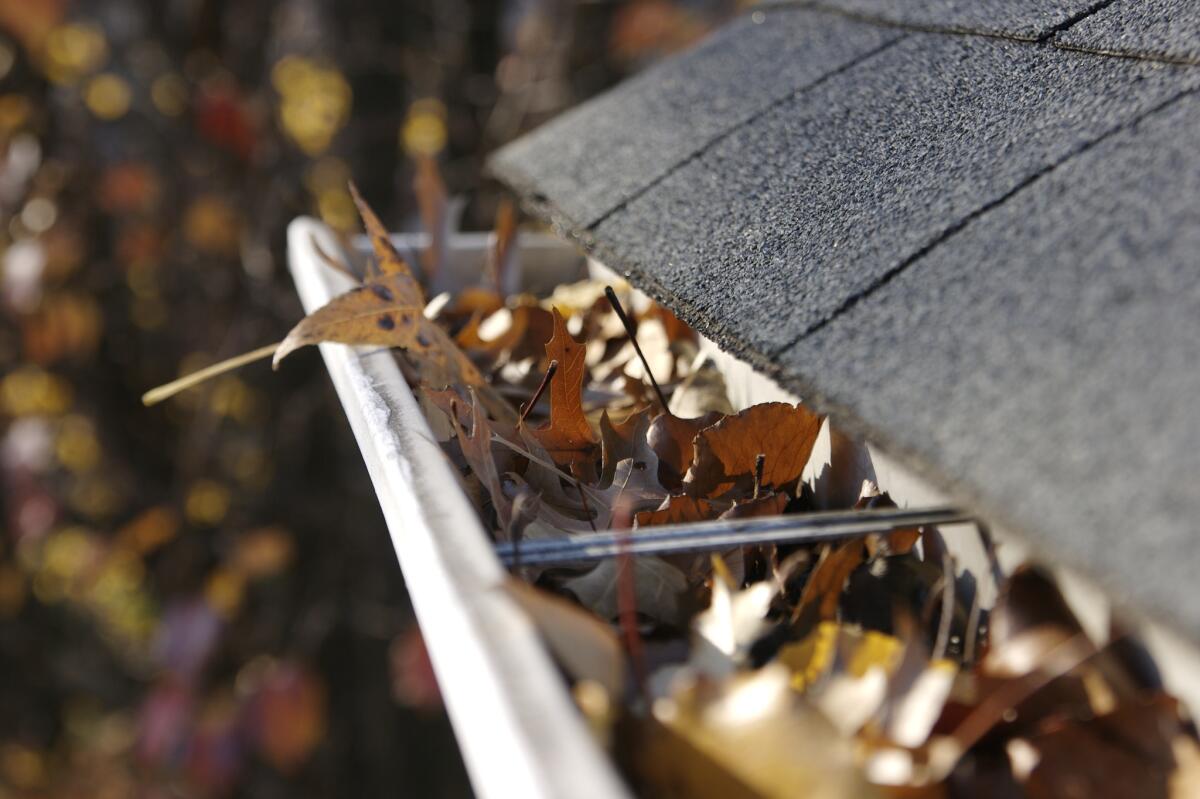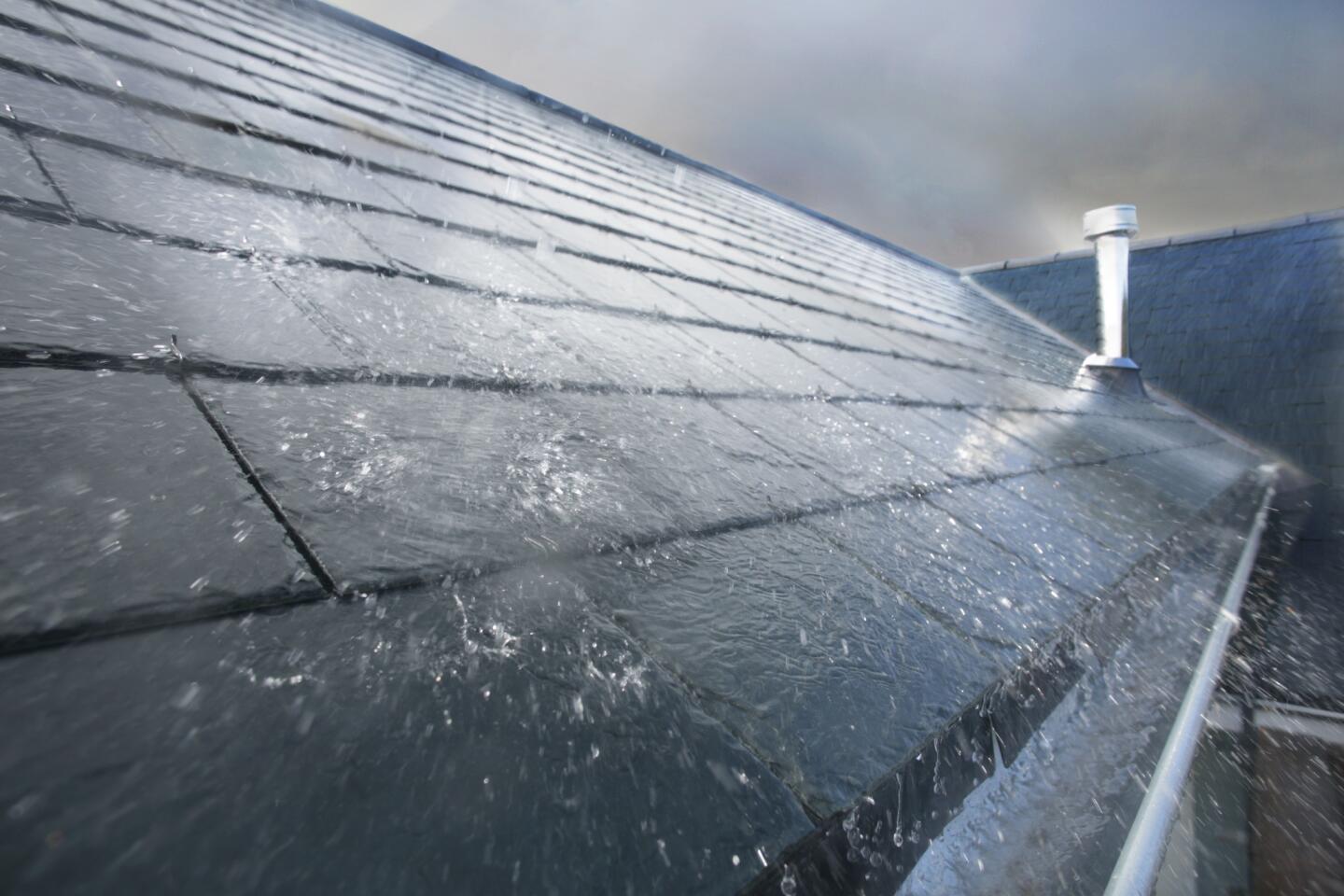28 things to do to prepare for El Niño rains this season
If El Nino rainfall predictions are correct, this fall and winter could be the answer to drought-relief prayers. As with everything in life, however, be careful what you wish for. While there is a chance precipitation will be only moderate, there is also the possibility of powerful, drenching rainstorms that can quickly create trouble on many fronts. It’s time to get your head in the game. Preparing your house, your yard, your car and your insurance — now — can be the best hedge against an unpredictable season. Here are 28 tasks to consider to better position yourself against whatever challenges El Niño throws your way.
------------
FOR THE RECORD:
Preparing for El Nino: In the Oct. 17 Saturday section, an article about how to prepare for El Nino gave an incorrect Web address for the California Department of Water Resources. The correct address is www.FloodPrepareCA.com. —
------------
Home
1. Fix your leaks before it rains: The recent dry heat may have caused wood structures to shrink and to open up expansion joints, possibly creating leak points. Call your roofer to check for trouble spots and repair any old leaks. Most roof leaks occur at metal flashing connection points, so make sure the flashing is free of debris. Use your hose to make sure the flashing is directing water off the roof and into the gutters.
2. Clean out your gutters and downspouts — and then clean them again: Don Vandervort, founder of Hometips.com, an online home improvement information and instruction site, clears the debris from his gutters and downspouts before a potentially rainy season — and then does it again after the first rain. Also look for any breaks and make sure the gutters are tight against the roofline. While you’re at it, seal up any holes from cables and other wires that penetrate exterior walls. For more information go to www.hometips.com.

Clean out your gutters and downspouts, and then clean them again. Don Vandervort, founder of Hometips.com, an online home improvement information and instruction site, clears the debris from his gutters and downspouts before a potential rainy season and then does it again after the first rain. Also look for any breaks and make sure the gutters are tight against the roofline. While you’re at it, seal up any holes from cables and other wires that penetrate exterior walls.
3. Invest in a generator: If you are in a neighborhood susceptible to power outages, consider buying a portable generator or even a permanent standby generator that immediately kicks in if the power goes out.
4. Install a sump pump: With enough rain, groundwater can invade below-grade spaces such as basements and garages even with good drainage systems in place. If you already have a sump pump, have your plumber service it.
5. Paint the exterior wood trim of your home: Cracks in paint can carry water directly into the wood and promote dry rot and termite invasion.
6. Examine your window glazing compound: The persistent hot, dry weather may have caused the glazing compound to shrink and pull away from the glass panes. Loosened panes can allow rain penetration. Check and recaulk as needed.
7. Check balcony and deck slopes: Make sure water flows away from the walls and into the drainage system.
8. Do a preemptive strike on any potential ant invasion: If wet weather in the past has sent ants or other bugs scurrying into your house, now is the time to bring in an exterminator.
9. Store emergency repair materials (sandbags, heavy plastic sheeting) in a safe dry place.
Auto
10. Is it time for new tires? To maintain contact with the road in wet weather, tires “should have at least 50% of tread life left,” notes Dave Skaien, manager of the Automobile Club of Southern California’s Approved Auto Repair Program. “Otherwise, they can’t displace water through their grooves,” and contact may be lost. They should also be correctly inflated. Underinflated tires “won’t sit properly on the ground, and you reduce traction,” he adds. “A quarter- to a half-inch of water can easily make you go into full hydroplaning mode at not very great speed.” For more information, go to www.aaa.com.
11. Pop for new wipers: A rainstorm is not the time to realize they cannot effectively clear your windshield of water.
12. Check your car lights.
13. How old is your car’s battery? At three years, have it checked by a trusted mechanic. At five years, “there’s a lot of merit in just replacing it before it fails,” Skaien says.
14. Get to know your braking system: Brakes should be checked and worn brake pads replaced, no matter the weather. Know that “cold, wet brakes do not work as well as warm, dry brakes,” Skaien says.
Garden
15. Make sure your yard drains properly. If you’ve substituted impervious hard-scape, rock and decomposed granite for lawn in the last few years, the drainage pattern in your yard may have changed. Water that used to percolate through spongy grass will now flow. Landscape architect and USC adjunct professor Bob Perry advises placing 3 to 4 inches of organic mulch in beds and areas where water will drain or collect.
If ponding becomes a problem, consider increasing the percentage of your yard that can absorb rainwater. Changes to the landscape may also have changed your property’s grading. Consulting an irrigation and drainage specialist can short-circuit any serious problems a heavy storm might cause.
16. Turn off your automatic watering system: It’s possible you won’t need it until spring.
17. Consider installing rain barrels at downspouts: Rain barrels are a relatively inexpensive way — and an easy DIY project — to capture water coming off your roof for later use. Make sure you direct any overflow from the barrels away from the house.
18. Plant winter vegetables in raised beds or elevated rows: Too much water can cause vegetables to rot.
19. Loosen compacted soil: Ground that has been allowed to dry out will repel water initially. Tilling in compost and covering with mulch will enable the ground to better absorb rain.
20. Have your trees checked: With the drought taking a toll on all trees, now is the time to bring in a certified arborist — not a simple tree cutter — to do a health check and risk assessment. “Trees weigh less now because they have less moisture in them, but they are weaker as well,” says Nick Araya, an arborist risk specialist at TreeCareLA. “A sudden onset of moisture may be too much weight for some branches to bear.” For more information, go to www.treecareLA.com.
21. Secure your yard: Reinforce your fencing if needed. Store or tie down anything that might blow and cause damage in high wind. Store outdoor furniture or, if it cannot be moved, place wood planks under the legs to lift them off the pavement. Cover glass-top tables with plywood secured with cord. Place potted plants in a sheltered area.
22. Have materials on hand to divert water: Sandbags, concrete edgers and straw-waddle tubing can effectively channel water away from structures to drainage areas.
23. Talk to your neighbors: If your house lies below another house, you’ll want to find out where their property drains. If they’ve changed the natural flow path, they may be liable for damage caused by storm runoff from their property onto yours.
24. Consider flood insurance even if you’re not in a high-risk area: “Twenty percent of people who file claims come from non-high-risk areas,” says Mary Simms, spokeswoman for the Federal Emergency Management Agency’s Region IX, which includes California. Flood insurance is not generally covered by regular homeowner policies. By congressional mandate, FEMA, through its National Flood Insurance Program (NFIP) and along with industry partners, makes flood insurance available. For more information, to go FEMA’s www.floodsmart.gov site. It takes 30 days for any flood policy to become effective.
25. Secure important documents in the cloud or on a thumb drive.
26. Put together preparedness and disaster supply kits for your home and car. FEMA, the California Department of Water Resources and the Auto Club are just three of many organizations that list important things to have on hand. For more information, go to www.floodprepareCA.com (California Department of Water Resources), www.ladbs.org (Los Angeles Department of Building and Safety “Homeowners Guide for Flood, Debris Flow and Erosion Control”), www.ready.gov (National Weather Service) and www.aaa.com (Automobile Club of Southern California).
27. Check out Flood Awareness Week, Oct. 19-24: The state Department of Water Resources is sponsoring a weeklong flood awareness event in partnership with the state agency California Volunteers. In addition to encouraging neighborhood groups to coordinate emergency plans, DWR offers on its new www.floodprepareCA.gov website information, search tools and a calendar of flood-preparedness events across the state.
28. Prepare now: Experts agree that the toughest time to find solutions to rain-related issues is during a rainstorm.
ALSO
Emergency supplies: Tools to put on the list for earthquakes and more
When The Big One hits, will you be ready? Take our quiz to be sure
Ready for disaster? Here are some items you may not have thought of
More to Read
Sign up for Essential California
The most important California stories and recommendations in your inbox every morning.
You may occasionally receive promotional content from the Los Angeles Times.












